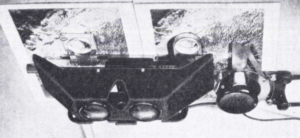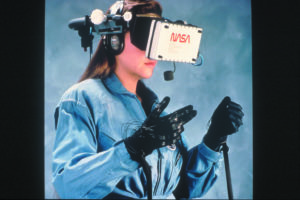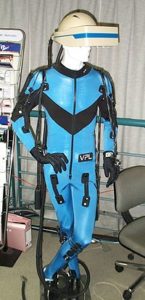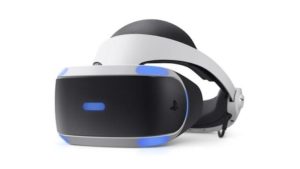While the endless chase to end this pandemic continues, most industries are worn out and cannot sustain any longer. However, there are some which are not only thriving but noting record high figures when it comes to sales and growth. Previously I have listed some startups which raised seed funds in these precarious times. It was evident from that list that VR among other technologies was set on making the mark.
So, today we unearth facts about this very niche market and what makes it so special.
Origins

The ultra-modern technology we have come to find so many uses for has been there since 1800’s. The very first adaptation was a stereoscope which was invented in 1838 by one Oliver Wendel Holmes. This design was further improved to develop the View-Master which was patented in 1939 and is still in production.
But why was this device even invented ?
Well, like many great inventions of humankind like microwave oven, antibiotics, photography, and the internet, to name a few this too was a wartime invention. As humans understood vision in greater detail, it was apparent that 2-D photographs are not an accurate way to decipher the true nature of any representation.

The Fairchild Stereocomparagraph was designed in the early 1900’s to aid remote sensing. Unlike the satellites of today, military back the used to rely on photographs taken by aerial reconnaissance missions.
By now it was well known that a flat 2-D picture does not give any idea about the depth of terrain. But using the technology of optics there could be a method to delay a photograph by some seconds. That was the working principle of early virtual reality machines.
Using that method, wartime officers would analyse said pictures to get a better understanding of the terrain being inspected.

The device soon evolved and by 1960 a head-mounted display device by the name of Telesphere Mask was invented. This was to shift the role of VR from wartime application to the entertainment industry. Similar developments were made along the years culminating in NASA’s Virtual Interface Environment Workstation which made use of a combined head-mounted device with gloves featuring haptic feedback for better interactivity.
That was responsible for the creation of VR flight simulators for training astronauts and pilots and the technology is being worked on even today, let’s see what’s happening currently.
The Market Players
When talking about Virtual Reality, it is sacrilege to not mention the ‘godfather’ of VR, Jaron

Lanier. He’s an American computer philosophy writer and visual artist who is credited for coining the very term Virtual Reality in 1987. Jaron started VPL Research, a company which pioneered research into VR and 3-D graphics. The company also pioneered the first VR glasses, responsive gloves, and the full data suit. Later in 1999, Sun Microsystem acquired VPL Research.
The developments stopped due to relative public indifference towards the technology before being picked up by one Palmer Luckey who designed the first prototype of the Oculus Rift. This rekindled public interest because of it’s feature which had among other things, a 90-degree field of vision coupled with a corrected software patch for the then famous game, Doom 3. This would be the design to gain mass popularity and serve as the template for future development.
Emboldened by this newfound success, Oculus Rift was presented at the E3 video game show in 2012 by John Carmack and was an instant hit. Any gamer would be aware of the issues caused by lagging, thankfully the issue of lags were mitigated in 2013 by game distributor Valve which freely shared the technological development. Till now, Oculus was being funded via Kickstarter but it caught the attention of Facebook which bought Oculus VR for a staggering $ 3 Billion in 2014.
Soon, HTC would step in the ring having partnered with Valve to debut HTC Vive and controllers in 2015. This would see the introduction of tracking technology called Lighthouse. Lighthouse made use of ‘base stations’ for positional tracking with IR Light. By then Google would introduce the Google Cardboard, a lightweight do-it-yourself implementation which was affordable and could be used for VR viewing.
By 2016 there were at least 230 companies developing VR applications and products. Amazon, Apple, Google, Microsoft (Holo Lens), Sony (Morpheus), and Samsung would go on to incorporate Augmented Reality and Virtual Reality as the focus of development with their future hardware.
The Spurt
With increasing innovation and improvement, numerous use cases have emerged in the last few years. However, with social distancing becoming the new norm due to the coronavirus the VR industry has seen an obvious growth spurt.
Not only are people consuming more media, but there’s been an overall growth in demand of VR solution in the B2B sector as well. Let’s explore some use cases.
- e-Commerce
Mobile VR technology has become more accessible and inexpensive in the last couple of years. That has allowed businesses to rely on Virtual Reality and to an extent, Augmented Reality when it comes to marketing.
PRC’s e-commerce giant Alibaba makes use of such technologies through Taobao Buy, an AR infused shopping experience brought to life using the Microsoft HoloLens Headset which Alibaba considers would be an everyday device soon.
Lockdown has forced us all to the confines of our house, however with AR and VR infusion companies like IKEA can still help you make design choices from the comfort of your couch. I am talking about the IKEA – Virtual Reality Showroom which gives you the option to explore rooms and products and to move around things, see how they look under different lighting and so on. Moreover, with IKEA’s AR implementation it is now possible to emulate your room in AR, place furniture around and allows you to remodel your house in real time albeit in the virtual environment.
The automobile industry was already going through tough times and the current situation does not make it any better. However, Audi has decided to continue it’s sales despite the setbacks by partnering with Samsung and creating a program that allows user to browse vehicles in said virtual showroom and take the car of their choice for a virtual drive all the while riding shotgun with an engineer sitting in the passenger seat and explaining the various functionalities. This system is so well detailed that Audi has used upwards of 30 million renderings for each car. - Infotainment Industry
There’s been a general growth in media consumption over the past few months. Major platforms like YouTube and Instagram have reported upwards of 100% growth in screen time. We must understand that the market driver in this instance, is already in our hands. Yes, the very phone or tablet or laptop you are using to read this article has the capability to be turned into a VR machine. Don’t believe me? Take the instance of Samsun Gear VR. It is compatible with all of Samsung’s latest offerings in the mobile market along with being shipped with controllers which allow a player to not only view VR content but play VR enabled games as well.
Companies such as Oculus has released options like Oculus Go and Oculus Quest which are standalone devices that can be taken practically anywhere, which is a huge step from the clunky setup process with older devices.
Putting the growth into perspective, the game Half-Life: Alyx crossed the one million sales mark within a month of release. Now that number will be ordinary for a normal game but Alyx was a purely VR based game. That certainly raises the bar and gives a sneak peek into the future of this industry and the road ahead with VR. - Professional Uses
We will talk about two distinct use cases here, the role of VR in mental health treatment and use of AI for business purposes like Virtual meetings.
Mental health is obviously the most pressing issue emanating from this lockdown. Not only is it causing said issues, but individuals who used to undergo therapy are now unable to do so because of travel restrictions.The brilliant thing about virtual reality is that you can provide powerful simulations in the environment without the perceived dangers of a real-life setting and have people repeatedly go into them.
– Daniel Freeman, Professor of clinical psychology at Oxford UniversityVR gives the psychologist a tool to not only emulate a situation to gauge the patient’s response to under the patient better, but the provide effective treatment through such innovative measures. UK based Immersive Rehab creates VR-Powered neurological rehab programmes to help individuals who are going through long recoveries after major surgeries or trauma to gradually improve their motor skills among other issues which may emanate from neurological injuries.
On a similar scale and function, French startup C2Care is creating VR tools that are capable of helping treat complex stress & anxiety along with phobia mitigation through it’s exposure therapy techniques. Quite an innovation is it’s proprietary method of introducing individuals to negative stimuli in controlled setting to either encourage or discourage certain habits. For example, negative stimuli being given to discourage smoking and drinking has shown significant success.
The Futuristic Sony Playstation VR retailing in India for under 40k! Moving on to our professional use case, it’s no wonder that VR increases focus. It is an simulated render of the real world after all. With remote working on the rise we are stuck to having meetings online. But have you ever been in an online meeting? It is messy. Someone’s audio is lagging, no one is focused, etc. VR mitigates such issues. HTC Vive has been in particular demand since the lockdown sterted as quoted by David Whelan from Immersive VR Education which selles VR collaboration platform called Engage.
Conferences and Meetings will be conducted by VR in the near future because of its obvious benefits over traditional forms of video conferencing. As new technologies such as eye tracking and facial expression recognition come to the limelight, we can only expect widespread adoption of such technologies.
The Future of VR
Now obviously, virtual reality is the way to the future and there’s no doubts about it. The nature of innovation, if one notices closely is to bring human closer. From the invention of steam engine to Internet, with every industrial revolution the world has been a smaller place than the last. Virtual reality is not any different. Now obviously it has it’s lion’s share of issues and by no means has it come close to perfection but it is the constant endeavour to develop through trials and errors to solve problems that affect us today, that is the key to development.
As the pandemic draws out into the better part of this year, we can find some solace in noting the silver lining and crafting a future amidst this instability.

